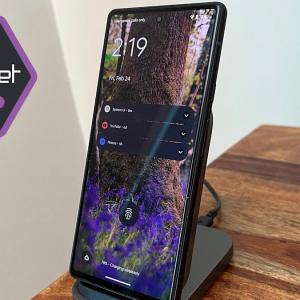
Adding the prefix super to anything makes it look more powerful or impressive. DC Comics’ Superman could go above and beyond human abilities in almost everything. Superman popularized this naming convention around the world.
Super apps are the counterparts of the comic hero in the tech world. These apps can do almost everything you can think of. They have emerged as a transformative trend in mobile development, redefining how users interact with digital services. These all-in-one applications integrate multiple functionalities, such as messaging, payments, e-commerce, and transportation, into a single platform. They offer seamless and convenient user experiences.
In 2026, super apps are reshaping the mobile app landscape, driven by advancements in technology, changing consumer behaviors, and the need for integrated ecosystems. This blog explores the rise, benefits, challenges, and future of these apps in mobile app development, highlighting their impact on users, businesses, and developers.
What are super apps?
Super apps are mobile applications that combine a wide range of services within a unified interface, eliminating the need for multiple standalone apps. Originating in Asia with pioneers like WeChat and Alipay, super apps have gained global traction, with companies like Grab, Gojek, and Paytm leading the charge.
They are evolving beyond their original markets, with Western companies like Uber and Revolut adopting the model to offer diverse services, from ride-hailing to financial management, within a single app. Super apps leverage technologies like 5G, AI, and cloud computing to deliver fast, personalized, and scalable experiences.
Key features of super apps
What makes an app “super”? A super app is not just a random combination of several services. It is an entire ecosystem, an integrated platform with some essential features that are all-encompassing.
1. Multifaceted functionality
Super apps consolidate services like messaging, payments, shopping, food delivery, and more into one platform. For example, WeChat allows users to chat, pay bills, book taxis, and shop without leaving the app.
They are also expanding to include healthcare, education, and entertainment, creating digital ecosystems that cater to nearly every aspect of daily life.
2. Seamless user experience
The rise of super apps marks a turning point in how digital ecosystems function. A hallmark of these platforms is their ability to provide a cohesive user experience across diverse services. Intuitive navigation, unified authentication (e.g., single sign-on), and consistent design ensure users can switch between functions effortlessly. In 2026, these apps will be leveraging AI to personalize interfaces, recommending services based on user behavior and preferences.
3. Mini-apps and modular architecture
These apps often incorporate mini-apps—lightweight, third-party applications that run within the main app’s ecosystem. These mini-apps, built using APIs or SDKs, allow businesses to integrate their services without developing standalone apps.
Platforms like WeChat and Grab offer developer-friendly frameworks, enabling rapid deployment of mini-apps for e-commerce, gaming, or utility services.
4. Integration with emerging technologies
Super apps are harnessing 5G, AI, and AR to enhance functionality. 5G’s low latency enables real-time services like live-streamed shopping or instant payments, while AI powers personalized recommendations and chatbots. AR features, such as virtual try-ons or navigation overlays, are becoming standard in super apps, enriching user engagement in 2026.
5. Robust payment systems
Payments are a core component of super apps, enabling seamless transactions across services. Apps like Alipay and Paytm integrate digital wallets, QR code payments, and cryptocurrency options. Super apps are now adopting blockchain-based payment systems for enhanced security and transparency, catering to the growing demand for decentralized finance.
Benefits of super apps
Super apps are growing in popularity globally. They offer several advantages and benefits, which are increasingly making them a user favorite.
1. Convenience and efficiency
Super apps simplify users lives by consolidating services into one platform, reducing the need to download and manage multiple apps. For instance, a user can book a ride, order food, and pay a bill within a single app like Grab. This convenience drives user retention, as super apps become central hubs for daily activities.
2. Cost-effective development
For businesses, super apps reduce development costs by leveraging a single platform to offer multiple services. Instead of building separate apps, companies can create mini-apps within an existing super app ecosystem, saving time and resources. For business purposes, this approach is particularly valuable for startups entering competitive markets.
3. Enhanced user engagement
Super apps collect vast amounts of user data across services, enabling hyper-personalized experiences. AI-driven analytics predict user needs, offering tailored promotions or services. For example, a super app might suggest a restaurant based on past orders or recommend a financial product based on spending patterns, boosting engagement in 2026.
4. Scalability and ecosystem growth
These apps are designed to scale, integrating new services as user needs evolve. Their modular architecture supports third-party developers, fostering vibrant ecosystems. In 2026, super apps like Gojek will expand into new verticals, such as education and healthcare, creating opportunities for businesses and developers to innovate.
5. Market expansion
Super apps enable businesses to reach diverse audiences without building region-specific apps. For example, a retailer can deploy a mini-app within WeChat to access millions of users in Asia. Moreover, global super apps are an emerging trend that will bridge the cultural and geographic gaps to facilitate cross-border commerce and collaboration.
Challenges in super app development
Super apps can be super confusing at times. The countless features they offer can easily become bloated and hard to maintain.
That is why, despite their potential, they face significant challenges. First, creating a seamless user experience across diverse services requires complex integration and robust infrastructure, increasing development complexity.
Second, performance issues, such as app size or battery consumption, can arise due to the inclusion of multiple functionalities.
Third, security and privacy are critical concerns, as super apps handle sensitive data like payment details and personal information. Compliance with regulations like GDPR and CCPA is essential. Finally, user adoption can be challenging in markets accustomed to standalone apps, requiring strategic marketing and education.
The role of developers and organizations
You don’t need super developers to create functional, effective, and smooth super apps. These apps are largely created using the same technologies that most developers are familiar with. It’s just the scale and complexity that developers have to work around.
Developers must adopt modular architectures and leverage frameworks like Flutter or React Native to build scalable, cross-platform super apps. Integrating APIs for payments, AI, and AR requires expertise in cloud computing and secure coding practices.
Moreover, Organizations should also invest in 5G infrastructure and partnerships with third-party providers to expand service offerings. User education is crucial; demonstrating the value of a super app’s all-in-one approach can drive adoption. Collaboration between developers, businesses, and platform providers is key to building thriving super app ecosystems in the coming years.
The future of super apps
Super apps have largely seen success in different parts of the world. However, there is one market where they haven’t penetrated as expected: the United States. The country, like other Western nations, has been slow to adopt these apps over alternatives.
There are some reasons for that, like stringent privacy and data laws, competition from established tech giants, and Western public preference for individual choice.
But in 2026, these apps are poised for global expansion, with Western markets increasingly adopting the model pioneered in Asia. The convergence of 5G, AI, and IoT will enable super apps to integrate with smart devices, such as wearables or connected vehicles, creating seamless ecosystems.
For example, a super app could manage a user’s smart home, book autonomous rides, and monitor health metrics in real-time. Blockchain integration will enhance security and enable decentralized services, such as peer-to-peer payments or data sharing. According to industry insights, these apps could evolve into “life operating systems” by 2030, centralizing all digital interactions.
Addressing security and privacy
Security is paramount, as super apps handle vast amounts of sensitive data. Developers must implement end-to-end encryption, secure APIs, and biometric authentication to protect users. Platforms are also adopting AI-driven threat detection to identify anomalies, such as unauthorized access or fraudulent transactions.
Privacy-preserving technologies, like federated learning, ensure data is processed locally, minimizing exposure. Compliance with global regulations is non-negotiable, requiring transparent data policies and user consent mechanisms to build trust.
Enhancing accessibility and inclusion
Super apps must prioritize accessibility to serve diverse audiences. Features like voice navigation, screen readers, and adjustable interfaces ensure usability for users with disabilities. In 2026, AI will enhance accessibility by offering real-time translations and gesture-based controls, making them inclusive across languages and abilities. Some platforms are also designed for low-bandwidth environments, ensuring functionality in regions with limited 5G access.
Real-world case studies: Super apps in action
WeChat remains the gold standard, offering messaging, payments, e-commerce, and more to over 1.3 billion users. However, Grab is also set to dominate Southeast Asia in the coming year with services like ride-hailing, food delivery, and financial products.
In the West, companies like Revolut are evolving into super apps by adding travel booking and crypto trading to their financial platforms. These examples highlight the versatility and potential of these apps to transform industries.
Conclusion
The market for super apps is ripe. Even places like the U.S. that haven’t yet fully embraced them are seeing a shift in trends. It is very likely that all major countries in the world will have their own super apps like WeChat in China at some point.
But there is still some time for that. While they offer all-in-one solutions that enhance user experience, these apps have to overcome significant challenges to become mainstream as smartphones or other household technologies.
Will it happen in 2026? Hard to say, but the motion is set, and we can expect major improvements in how super apps are built and delivered in the coming years.
Partner with Xavor if you want an early advantage in the coming age of mobile development. We have led projects in super app development for our clients in China, America, and Europe. Therefore, we not only understand the technical aspects but also the cultural factors to make your super app succeed in any market.
Contact us at info@xavor.com to supercharge your mobile app.







